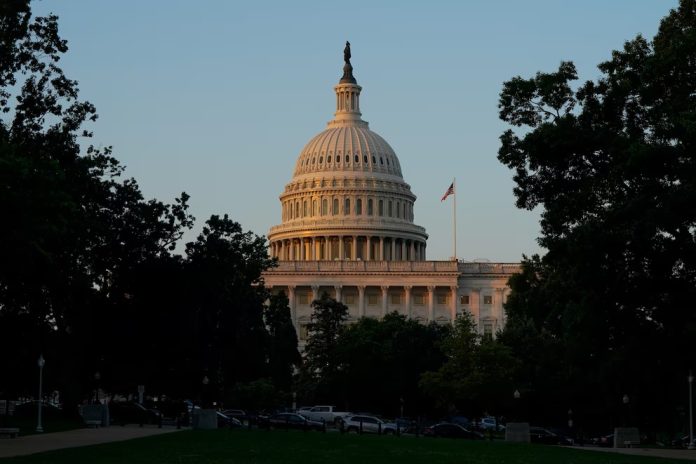
The Senate approved the budget proposed by Donald Trump’s administration. This bill regulates federal government spending and taxes and, in The Economist’s view, is the “most consequential legislation of Donald Trump’s second term.”
Originally published on July 2nd, 2025
Tuesday July 1st, the U.S. Senate approved the budget bill promoted by Donald Trump, which the president dubbed a “One Big, Beautiful Bill.”
After two days of marathon sessions, it passed by a narrow margin: 51 votes in favor to 50 against, with Vice President J.D. Vance casting the tie-breaking vote.
The bill regulates federal government’s spending and taxation and, according to The Economist, represents the “most consequential legislation of Donald Trump’s second term.” Let’s take a look at some of its key provisions.
1. Tax Cuts
Trump claims the budget bill includes the “biggest tax cut in U.S. history.” There’s some truth to his statement, as it allocates roughly $4.5 trillion in tax reductions.
The plan aims to make permanent the income tax cuts he championed in 2017, which are set to expire this December. Additionally, it introduces new tax breaks on tips, overtime pay, and auto loans—key campaign promises that would add another $500 billion to the deficit.
According to the Congressional Budget Office (CBO), the bill would increase the federal deficit by over $3.3 trillion in the next decade. This has drawn fierce opposition from Democrats and even fiscally conservative Republican “deficit hawks” in the Senate, who argue for a more restrained budget.
This contradiction is the result of Trump’s intent to implement a series of fiscal incentives that openly favor his electoral base. Defending the bill on social media, he argued:
“America wants lower taxes—including NO TAX on tips, overtime, or Social Security—strong border security, a powerful military, and a law that’s GREAT for our farmers, manufacturers, and JOBS!”
2. Budget Cuts
To offset the tax reductions, the bill includes significant spending cuts, primarily targeting federal-funded healthcare and food assistance programs.
For the 2026 fiscal year, federal spending would be slashed by $163 billion, focusing on programs the Trump administration condemns as “woke” or harmful to American workers’ interests—a group the billionaire claims to represent.
Key cuts include a 22.6% reduction in non-defense discretionary spending, bringing it to its lowest level since 2017. In addition there would be a $12 billion cut from the Department of Education, while Health and Human Services would suffer roughly a $33.3 billion cut.
According to the CBO, these measures would leave 12 million people without health insurance by 2034 and they would render 3 million more ineligible for food stamps (SNAP benefits).
Additionally, the bill imposes deep cuts to environmental protection programs and scientific research funding, further reshaping federal priorities.
3. Funding for Anti-Immigration Agenda and Militarization
The budget bill carries the unmistakable MAGA imprint, directly targeting migrant workers—a group the current U.S. administration has labeled as an “internal threat.”
One of its most regressive measures is the imposition of a 1% tax on international remittances, a reduction from the 3.5% rate originally approved by the House.
This measure will particularly harm Central American nations such as El Salvador, Guatemala, and Honduras, where remittances constitute a vital component of their Gross National Income (an economic indicator that measures the total income generated by a country’s residents, both domestically and abroad)
Simultaneously, the budget for the Department of Defense and the Department of Homeland Security is significantly increased by 13% and 65%, respectively. For example, about $350 billion is allocated for “national security” tasks at the border, of which $46 billion will be spent on the border wall with Mexico and another $45 billion on 100,000 beds in migrant detention centers.
Through these measures, the White House aims to build the necessary infrastructure to meet its ambitious deportation targets, with a stated goal of removing one million migrants this year – approximately 3,000 deportations daily
In addition, the Government would direct billions of dollars to the Pentagon, using these funds to develop a new naval system, expand the munitions stockpiles and increase the compensation for military personnel. A notable example includes the White House’s proposed $25 billion investment to develop the so-called “Golden Dome” missile defense system.
Translated by S. Reiter

